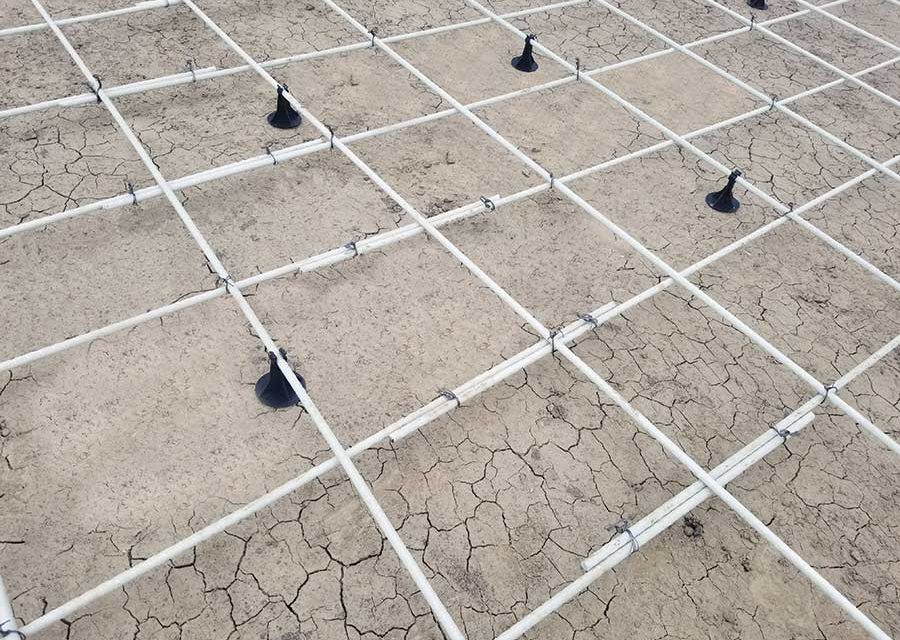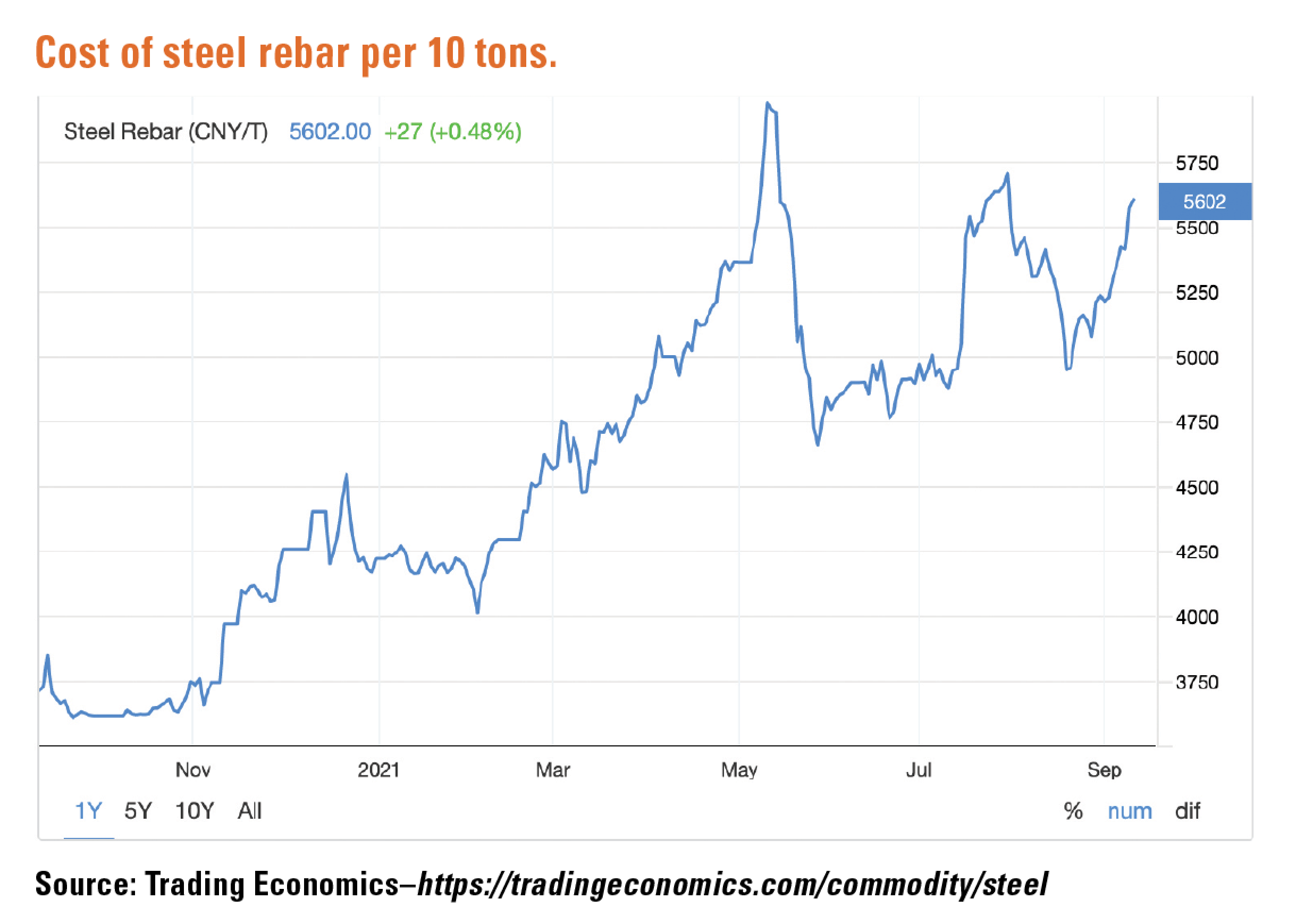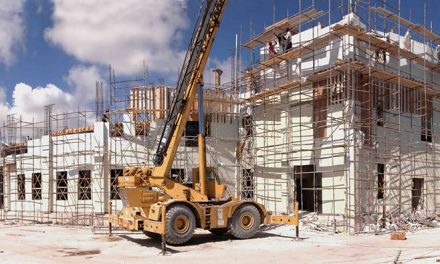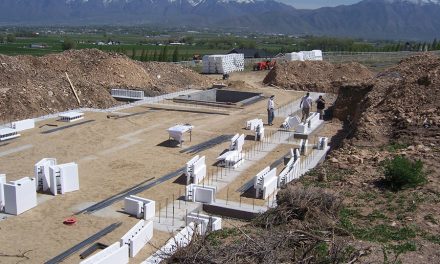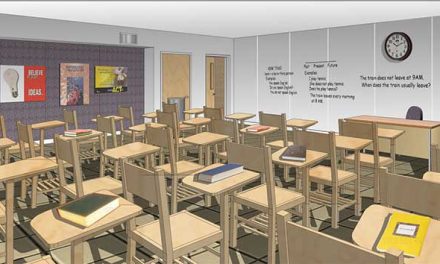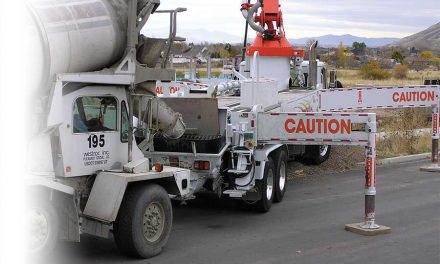A photo of a grid of LiteBar suspended using LiteChair rebar chairs.
By Vanessa Salvia
The industry has been rocked by a few upheavals in the past year . . . a big one was the major increase in lumber prices (see “The Price of Lumber Skyrockets” in the January/February 2021 issue of ICF Builder magazine for more about this.) Back in August 2020, Fortune magazine said that a 134% spike in lumber prices added about $14,000 to the cost of the average new single-family home construction, according to the National Association of Home Builders (which closed the gap on pricing of an ICF home versus traditional stick built). Steel is another commodity that has spiked in price too. Lumber prices have fallen — it’s at around $600 per 1,000 board feet as of mid-September — but it probably won’t go back down to pre-pandemic prices of $200 to $400 per unit.
According to February 2021 numbers from Reuters, domestic steel prices have risen more than 160% since last August. As of mid-September, Steel consumers have either absorbed the cost or passed the increased cost onto their customers. There’s been a shortage of steel of all sorts, which has led to higher prices. In March 2021, the Concrete Foundations Association (CFA) announced an industry-wide effort to mitigate the pending shortage of steel form ties across the North American markets.
A September 9 article by the National Association of Home Builders stated that nine building materials increased in price by more than 20% between April and July:
- Laminated veneer lumber
- Building paper & building board mill products
- Fertilizer materials
- Plastic water pipe
- Fabricated structural metal
- Other engineered structural wood members
- Copper pipe and tube
- Steel mill products
- Aluminum base scrap
Combating An Industry-wide Shortage
James Baty, executive director of the CFA, said earlier in the year that the shortage of steel form ties is reducing production capacity for contractors and is threatening to create a temporary shutdown in construction, in a market which is already seeing a high demand. “This shortage has evolved over the past two quarters into a significant industry issue,” said Baty. “The record level of housing starts in 2020 has combined with significant factors such as purchasing practices, raw material depletion and tariffs on imports as well as the pandemic’s impact on both shipping and manufacturing.”
Low Supply, High Demand
The Census Bureau reported that unfilled orders for steel in the last quarter 2020 were at the highest level in five years, while inventories were near a 3 1/2-year low. The benchmark price for hot-rolled steel hit $1,176 per ton in February 2021, and today’s price is around $1,900 per ton, its highest level in at least 13 years. Production capacity at steel facilities has increased, but is still way below what it was a year ago.
Last year, Cleveland-Cliffs, the largest flat-rolled steel
producer in North America, acquired AK Steel for $1.1 billion and U.S. steel mills from ArcelorMittal for $1.4 billion. This leaves them with little incentive to produce more steel, which would mean prices would fall.
Steel Rebar Alternatives
At today’s high rates, it’s hard to maintain any profitable margin. There are a few products that can solve this problem. GatorBar and LiteBar are both steel rebar alternatives. While GatorBar has varieties made of fiber from glass, basalt, aramid, or carbon, LiteBar is a fiberglass rebar.
LiteBar combines glass fiber with a powerful resin, and results in a bar that weighs approximately 2.5 pounds. It can be used in most places that steel would be suitable, but because it’s also corrosion resistant and doesn’t conduct electricity, it’s particularly well-suited for high-moisture and coastal environments. Both LiteBar and GatorBar can be cut with bolt cutters, a grinder, or a circular saw, but in-the-field bending is not possible. LiteBar comes in varying sizes and has 90-degree corners.
“LiteBar is now much less expensive than steel,” says Dave Hall, marketing coordinator for LiteForm, makers of LiteBar. “The beauty of a steel alternative like this is it’s lightweight, its ease of installation, and it doesn’t rust.”

